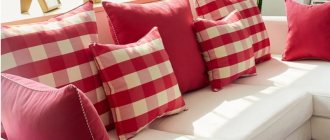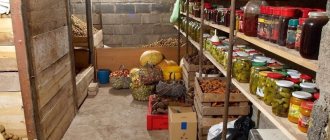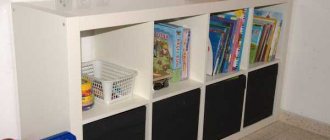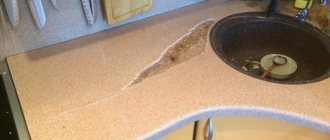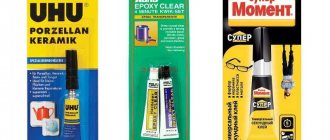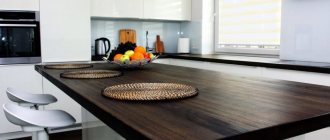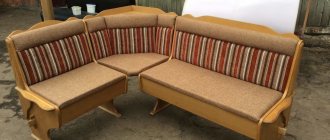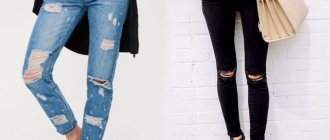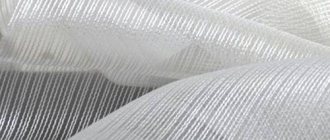In construction, polyethylene film is mostly used as a waterproofing agent or heat insulator when it comes to film greenhouses. Polyethylene has certain soundproofing properties, but not sufficient to use it as an independent sound insulator.
To glue polyethylene, you must first purchase the kind of glue that is used for gluing plastic.
Glue for polyethylene - which one is best for home use
To glue polyethylene parts, special adhesive compositions have been developed. Using adhesives for gluing polyethylene has several advantages:
- Does not damage the material;
- Uniform pressure distribution;
- Possibility of connecting different parts;
- Fixation of individual zones can occur instantly.
At the same time, polyethylene and polypropylene are difficult to glue materials; only high-quality film adhesive can achieve reliable fixation at home. You need to choose the product carefully.
To glue polyethylene parts, special adhesive compositions have been developed.
Properties and features of polyethylene
Before gluing polyethylene, you need to understand its features. Polyethylene products provide excellent protection against moisture penetration, electrical protection, and also absorb radioactive exposure. They exhibit the highest resistance to chemical components, for this reason gluing polyethylene is a complex process.
The gluing process involves not only chemical reactions, but also the attraction of substances to each other due to the difference in their charges. How can we glue polyethylene together when it has similar properties? Chemists have been able to find means that help produce this effect. Adhesive for polyethylene film, canisters, and plastic pipes has special properties that allow the material to be bonded.
Polyethylene products provide excellent protection against moisture penetration, electrical protection, and also absorb radioactive exposure.
How to glue oilcloth with an iron
This problem is often faced by owners of summer cottages, greenhouses, home craftsmen, and even car owners. After failures, people start looking for information on the topic. Is it even possible to glue polyethylene? In the article you will find the answer to this question.
Polyethylene and its properties
Polyethylene is a very common material with many excellent properties.
It is used for insulation, for packaging, for protection from moisture, is an excellent electrical insulator, absorbs the most dangerous type of radiation - neutrons and is therefore used in protection against them, and is completely chemically resistant. This latter sometimes turns from an advantage into a disadvantage.
How to glue polyethylene? Gluing is a chemical and a little electrical process, oddly enough. The molecules of the substances being glued are attracted to each other due to the difference in their electrical charges.
Polyethylene in hands
That is, there must be an adhesive in nature (and on the market) that adheres well to polyethylene, and when hardened, firmly holds the glued parts. So, the problem is that gluing polyethylene is very difficult.
Its molecules are electrically very “balanced”, hence the extraordinary chemical resistance of the material. And a reluctance to stick to anything. However, the industry has found something to glue polyethylene with. True, not all of this is suitable for home, but some may come in handy.
Here are the suitable methods, selected according to the resulting strength rating:
- Welding polyethylene
- Weicon Easy-Mix PE-PP Adhesive
- Epoxy glue plus oxidizing agent
We will consider these three methods further.
Welding polyethylene
The strongest seam is obtained when welding polyethylene. If done correctly. The fact is that polyethylene is hot molded, usually under very high pressure, which reaches hundreds of kilograms per square centimeter.
And when it is reheated at atmospheric pressure until it melts, it tends to shrink, a little, but this is enough to make welding difficult. Two types of welding can be distinguished: film welding and thick polyethylene welding (canisters, pipes, etc.).
)
To weld the film, heated objects or a special apparatus for gluing polyethylene, or more precisely, welding, are used. It works like this: both layers of film are pulled along a heated wedge, and then immediately welded with a pair of compressed rollers. With the correct selection of temperature and pressure of the rollers, an excellent result is obtained - complete sealing of the seam.
This is what a polyethylene gluing machine looks like
But with a little practice, you can learn how to glue polyethylene even with an electric soldering iron or iron through paper, so as not to spoil its sole. The clean edges of the film are placed on top of each other and driven through the paper with the edge of the sole of a heated iron.
A soldering iron with a clean tip, if turned on through the voltage regulator, welds the seam even better, and no paper is needed. You can also make a clamp on the tip with a small nozzle of a convenient shape made of metal. Then the tip can be used for its intended purpose, and the polyethylene will not be stained with solder or carbon deposits from flux.
Gluing thick polyethylene is more difficult and requires good skill. The best heating method: a portable gas burner (it’s convenient to use), or a hair dryer with a nozzle for a narrow jet of +250°C.
The process of gluing thick polyethylene using a hair dryer with a nozzle
The procedure could be as follows:
- Thoroughly clean and dry surfaces before welding.
- Prepare polyethylene filler for the seam. It is best to take a narrow piece of the same material.
- Heat the edges of the seam until melting begins and let them “settle” a little. But don't get carried away with this process.
- Start introducing the additive (see point 2), fusing it evenly into both sides of the seam to a thickness equal to the material.
- Allow the seam to cool completely.
The same method is applicable when deciding what to use for gluing foamed polyethylene. The surface of foamed polyethylene is not very conducive to bonding, and it is better to weld it carefully.
For another method of welding thick polyethylene, see the video:
Gluing with acrylate glue with filler
The best glue is Weicon Easy-Mix PE-PP. It is specially designed for materials with weak adhesion. Most liquids “stick” to polyethylene very poorly and are simply squeezed out from the point of contact between the surfaces.
Appearance of Weicon Easy-Mix PE-PP glue
But this glue contains the addition of tiny glass beads, which prevents the glue from leaving the gluing area, forming a gap of the required thickness. Therefore, the gluing surface is sufficient and the glue, when hardened, holds the surfaces firmly together. It’s hard to find anything better than gluing polyethylene.
Surfaces must be thoroughly degreased and dried before gluing. Glue can only be supplied from a branded packaging mixer. The best temperature for doing work is +21. +23 °C. Liquid glue is good for no more than 2-3 minutes.
After applying the layer, you must immediately join the surfaces. Full readiness of the seam (maximum mechanical strength) for polyethylene will be achieved in a few hours (4-5 according to the experience of those who worked with glue).
The curing of the adhesive joint is carried out at a temperature from +15 to +70 degrees.
Bonding with epoxy glue
This is the most accessible method, if we talk specifically about gluing and not welding. Before gluing polyethylene, you need to prepare the surfaces.
Epoxy glue packaging
Epoxy glue is not a glue for gluing polyethylene, but, nevertheless, phenol-formaldehyde resin has very decent adhesion to the surface of polyethylene. In this case, you need to act like this:
- Roughen the surfaces with emery cloth, then degrease and dry.
- Treat both surfaces with a 15-25% solution of chromic anhydride or 20-30% potassium dichromate. (Caution, caustic substances and dangerous carcinogens!) You can take another strong oxidizing agent: a strong solution of potassium permanganate. It is not much less effective, but is much safer. After treatment, dry the surfaces again.
- Prepare epoxy glue according to instructions.
- Apply a thin layer of glue to both surfaces and join.
- Maintain at a temperature of +30. +45°C for several hours, but it’s better to leave it for a day until ready.
Conclusion
In case of high strength requirements, welding should definitely be preferred. If welding is also accompanied by keeping the seam warm at about seventy degrees for several hours with slow cooling, then the seam will have a slight fragility. Rapid cooling of the seam makes it brittle, especially in cold conditions.
Acrylate adhesive with filler does not require mechanical preparation of the surface, except for unconditional cleaning and degreasing, which must always be done before gluing. You can even try to experiment with other acrylate adhesives by adding an additive in the form of crushed chalk or cement. It is possible that you will be able to get a high-quality and very inexpensive recipe.
Source: https://firedept.ru/kak-skleit-kleenku-utjugom/
Technical characteristics of polyethylene
Polyethylene film is used as insulation, packaging material, and electrical insulator. It can reliably protect against moisture and absorbs neutrons, which are a type of radioactive radiation. Foamed polyethylene, otherwise called isolon or polyfol, is used to insulate a home - it is used to cover walls.
The question of how to glue polyethylene arises quite often. The usual composition is not suitable for these purposes, since the material is chemically inert. A special glue for polyethylene is required.
Polyethylene bonding is an electrical and chemical based process. The adhesive composition should adhere well to the surface of the film, and after hardening, reliably adhere the surfaces to each other.
There are two ways to firmly glue polyethylene:
- High temperature welding (iron).
- Use of adhesives.
Open flame welding of polyethylene
To verify polyethylene using this method you will need:
- metal or ceramic bars;
- welding tool (this can be a gas torch, a blowtorch, an alcohol lamp, and in the absence of these, you can use a splinter or even ordinary matches).
Electrical circuit diagram for connecting the “iron” to the network: 1 - constant wirewound resistor; 2 — metal body; 3 — sting-ridge; 4 — textolite handle; 5 - stand.
The edges of the films to be welded must be fixed with metal or ceramic bars (wooden ones are not suitable for these purposes). They need to be fixed in such a way that at the welding site a narrow strip of film (3-5 mm, no more) is visible from under them. The bars are needed not only for fixing the film, but mainly in order to quickly remove heat from the films being welded, otherwise they will burn out entirely instead of fusing.
Next you need to run the flame along the remaining open edge. The speed of flame movement will also have to be selected experimentally, especially since it will be different not only for each brand of polyethylene, but also for each tool. If the operation is performed correctly, then upon completion a dense roller will be formed, firmly connecting the two edges of the plastic film.
As an alternative to welding, when constructing greenhouses and greenhouses, two pieces of plastic film can be sewn together. To do this, two pieces of film are overlapped on top of each other. The overlap should be 2-2.5 cm. Then a regular medical plaster is glued to the overlap on both sides. It won’t stick well, but that’s not a big deal, the main thing is that the strips of adhesive lie exactly where they overlap, one above the other.
Then, overlapping, two seams are made with large stitches. In this case, pieces of film are held together using stitched threads, and the patch, having a stronger material structure, prevents the threads from tearing the polyethylene. However, this method is not suitable for waterproofing, since the seams will allow moisture to pass through.
It should be noted that both welding methods are only suitable if you need to connect polyethylene to polyethylene.
If there is a need to glue the film to some other material, then you will have to look for a transparent film made of another material, which adheres better, and for which there are special adhesives on sale. Alternatively, it could be polyvinyl chloride film.
It’s up to you to connect plastic film using the methods described or look for something new. The main thing is not to be afraid to experiment, because if something cannot be done today, this does not mean at all that it cannot be done tomorrow or the day after tomorrow.
Paste
Homemade paste is the easiest way to replace wallpaper glue; it is also suitable for those who make paper crafts.
The basis of such a product can be flour or potato starch. The advantage of this alternative option is that it is completely safe for human health; this is especially true if a child will be working with it.
Regardless of whether flour or starch is chosen as the base of the paste, the calculation is based on the proportions - for 1 liter of water 6 tbsp. l. second product. You need to cook the paste over low heat, stirring it constantly.
Using an iron to solder plastic film
Not every apartment has a soldering iron, which cannot be said about an iron. Everyone probably has this electrical device. To solder the film you need to do exactly the same.
The advantage of an iron over a soldering iron is the ability to create wide seams. But thin seams can also be created. To do this, you should do it not with the sole of the iron, but with its edge.
The result is a neat seam, which in its strength can even compete with a seam made with a soldering iron. In fact, at the point of soldering, the polyethylene becomes stronger.
Thanks to this technique, it is possible to independently create polyethylene structures that are guaranteed to be used in everyday life.
In the video, the master will demonstrate several ways to solder polyethylene film at home:
Welding the film is one of the work operations that may sometimes be necessary. For many types of work, pieces of polyethylene film need to be tightly connected to each other. Most often this is necessary for the construction of a greenhouse, greenhouse, and installation of vapor barriers during construction.
For domestic needs, film welding may also be necessary. To carry out some activities, it is necessary to provide a hermetically sealed connection to the material in order to obtain a product. When gluing polyethylene using tape or adhesives, high-quality sealed joints will not be obtained, therefore, if it is necessary to ensure a strong connection, welding is used.
Crafts for children schemes: colorful pasta
– pasta (any kind is possible)
– bags with a zipper (can be replaced with regular bags and an elastic band)
1. Fill a saucepan with water, add a pinch of salt, cover with a lid and put on fire. Wait until the water boils and cook the pasta.
2. Place the cooked pasta in a colander and pour cold water over it.
3. Add 20 drops of one color or another and two tablespoons of water to each ziplock bag.
4. Place equal portions of cooked pasta into each dye packet. Close the zipper, shake and let the pasta absorb the food coloring.
5. When the pasta has colored, pour it back into the colander and run cold water over it to remove any excess coloring.
*You can add a little olive oil to prevent the pasta from sticking, add a little butter and serve.
Types of glue and their manufacturers
The vast majority of adhesive compositions practically do not stick to polyethylene, simply being squeezed out from the area where the surfaces come into contact. But there are still materials that can cope with such a difficult task.
The most popular types of glue that can be used for polyethylene are:
- BF-2, BF-4;
- two-component acrylate;
- epoxy.
Butyraphenol glue (abbreviated as BF) is produced in Russia, manufactured by Petrokhim CJSC in St. Petersburg. The glue is a viscous, thick liquid of brown or reddish-brown color and does not rot or corrode.
BF-2 is suitable for gluing metal, plastic, ceramics and wood, and is used for restoration work. Glue cannot be used for dishes, as it contains toxic aldehydes and phenol. BF-2 is universal, chemically inert and moisture resistant.
BF-4 is practically no different from BF-2 in terms of chemical resistance, but its scope of application is slightly different. BF-4 is usually used for gluing elastic materials that are subject to vibration and bending. For example, leather, wood, plexiglass, textolite, metals and alloys.
Two-component acrylate adhesive V-Strong GELIAHAO 302 is characterized by increased strength, it is transparent and does not harden very quickly (in 4 minutes), which allows you not to rush too much when working. Excellent bonding of metal and plexiglass.
Transparent epoxy adhesive “Contact” ROSEL , St. Petersburg, based on polyepoxy resin and hardener. Used for repairing products made of fiberglass, porcelain, wood, earthenware, glass, metal and various alloys. The composition perfectly fills cracks, voids and gaps, restores the shape and volume of objects. The seam is characterized by resistance to gasoline, oil, and water.
What to glue with?
Polypropylene sheets, plastic, high and low pressure cellophane film - all these materials have low adhesive ability. Their surface is not only smooth, but also has no porosity to absorb adhesives. To date, no special adhesives designed specifically for polyethylene have been invented.
But there are adhesive compositions with a wider spectrum of action, which, under certain conditions, help to join polymer materials.
Types of glue
Adhesive compositions for polymer materials are divided into 2 types.
- One-component adhesive - this composition is completely ready for use and does not require any additional ingredients.
- Two-component adhesive - consists of an adhesive base and an additional component in the form of a polymerizing substance called a hardener. Before starting work, both components must be combined by mixing. The finished composition cannot be stored and is used immediately after preparation, since polymerization begins under the influence of oxygen.
According to the method of hardening, all adhesive compositions are divided into 3 groups:
- cold polymerization – the glue hardens at a temperature of 20°C;
- thermoactive polymerization - for hardening, the adhesive composition or the bonded surface of the material must be heated;
- mixed polymerization - the adhesive can harden under heated conditions or at room temperature.
Modern adhesive compositions have additives that dissolve polymer surfaces, thereby creating conditions for better adhesion. The solvent has the property of rapid evaporation, after which the polymer mass hardens, forming a seam. In the weld area, the surfaces of the two workpieces form a common fabric, which is why this process is called cold welding.
Top brands
The bulk of modern adhesive compositions contain methacrylate, which is a two-component element, but without the admixture of a primer-hardener that is harmful to the human body.
For gluing polyamide and polyethylene, adhesive compositions of several popular brands can be used.
- Easy-Mix PE-PP - from the manufacturer Weicon. Crushed glass in the form of a fine dispersion is used as a primer, which, when distributed over the surface of the parts to be glued, ensures good adhesion. The composition does not contain any impurities harmful to humans, so the product can be used at home. Before applying it to work surfaces, there is no need to prepare them in any special way - it is enough to simply remove obvious contamination. The components of the paste adhesive are mixed when it is supplied from the tube directly at the gluing area.
- "BF-2" - Russian production. It looks like a viscous substance of brownish-red color. The glue composition contains phenols and formaldehydes, which are classified as toxic substances. The adhesive composition is positioned as a moisture-resistant and universal preparation intended for gluing polymer materials.
- "BF-4" is a domestic product. It has a similar composition as BF-2 glue, as well as additional components that increase the elasticity of the seam. BF-4 adhesive is used for gluing polymers that are exposed to frequent deformation cycles and vibration loads. In addition, glue can connect plexiglass, metal, wood and leather.
- Griffon UNI-100 – country of origin is the Netherlands. Consists of one component based on thixotropic substances. Used for joining polymer surfaces. Before use, such surfaces must be cleaned using the cleaner included with the adhesive.
- "Contact" is a Russian two-component product. Includes epoxy polymer resin and hardener. Polymerization of the adhesive mass occurs at room temperature. The finished seam is highly resistant to water, gasoline and oils. The adhesive composition is used for polymer materials, as well as for gluing glass, porcelain, metal, and wood. A thick mass of glue fills all the voids and cracks, forming a single monolithic seam that has no elasticity.
In addition to smooth polyethylene, foamed polymer materials also need gluing. The porous structure of foamed polymers is characterized by flexibility, so the adhesive connection must be quite reliable. Other types of glue are used to glue such materials.
- “88 Lux” is a Russian product. A one-component synthetic adhesive that does not contain substances toxic to humans. The adhesive composition has a long polymerization period; the seam finally hardens only a day after gluing the surfaces. When using “88 Lux” glue, the finished seam is resistant to moisture and sub-zero temperatures.
- “88 P-1” is a one-component adhesive made in Russia. The product is ready for use and consists of chloroprene rubber. The composition does not release toxic components into the environment and is suitable for household use. After gluing, the resulting seam has a high degree of strength and bending elasticity.
Oilcloth for walls
The most popular solution for using oilcloth is covering a dining table.
Previously, oilcloths were sold on a cardboard base, on which a layer of polyvinyl chloride (PVC) was applied to give strength. It is worth noting that such oilcloths were of rather poor quality: flimsy, had a strong, nasty smell, and over time the designs on them wore off.
With the introduction of modern new technologies, oilcloths have emerged using synthetic and polyester varnish compositions, giving the material brightness, density, lightness, and wear resistance. Modern oilcloth is more of a fabric, which is why it looks quite interesting and beautiful.
How to glue foamed polyethylene
This material is distinguished by its porosity and is used for insulation from heat, water and fumes. Low cost and ease of operation made it popular in construction work. A suitable substance for gluing foamed polyethylene is two-component solutions. The glue should be based on methyl acrylate, which has excellent adhesion properties.
Before gluing the polyethylene foam together, you should sandblast the surface of the object. You can attack it physically, such as with fire, or with chemicals, such as fluorine.
This material is distinguished by its porosity and is used for insulation from heat, water and fumes.
Oilcloth on the wall for the kitchen
When renovating the kitchen, everyone thinks that everything should be simple and practical, because this room has always been the most popular place in every apartment and the pride of the owner.
Modern building materials can satisfy the needs of any person, even the most fastidious. But, unfortunately, not everyone has the means to cover their kitchen with expensive materials. Therefore, oilcloth on the wall in this case is the best option, because it has a beautiful appearance and is quite cheap. The kitchen, most of all, differs from other rooms in its practicality, since the risk of contamination is highest here. Therefore, oilcloth would be most appropriate here, since after each cleaning it looks like new.
Of course, there is now a large selection of these products on the market, but how to choose high-quality, not expensive material, but at the same time, it looks beautiful and stylish? Let's try to find out, because like every finishing material, oilcloth has its own advantages and disadvantages.
Polyethylene and its properties
Polyethylene is an organic compound. Thermoplastic ethylene polymer - many thin sheets needed in everyday life. The second name is cellophane.
Available in three density options: low, medium, high. Density affects the properties of the product. Low-density cellophane stretches and is elastic, while high-density cellophane is prone to cracking.
- The thicker the layer of material, the lower the transparency.
- At a temperature of -60 – -269 degrees, crystallization occurs, which will lead to cracking.
- Doesn't absorb water, doesn't even get wet by it.
- Without heating, it does not dissolve in organic solvents.
- If the temperature exceeds 80 degrees, then swelling occurs first, then dissolution in aromatic hydrocarbons.
- Shows resistance to many substances at normal temperatures.
- At temperatures above 60 degrees, it can be destroyed by sulfuric and nitric acid.
- The chrome mixture promotes oxidation of the polyethylene surface, resulting in wetting with water and the adhesive mass.
Useful tips
Recommendations from specialists will help to glue polyethylene together efficiently, firmly and reliably, so that the products will serve for a long time:
- If very high demands are placed on the strength of the seam being formed, then the optimal method for gluing polyethylene is welding. The seam will be strong if it is not allowed to cool suddenly.
- Before using filled acrylate adhesive, no mechanical preparation of the surface is required. With the exception of degreasing and cleaning, which are carried out before gluing any surfaces.
- The seam formed after gluing the film with acrylate glue should be kept at a temperature from +15 to +70˚ C for 4-5 hours.
- Epoxy glue is difficult to work with, and the bond strength is not very good.
Tip You can create your own recipe for polyethylene glue by adding a little crushed chalk or cement to the acrylate glue. The composition can be of high quality and at the same time inexpensive.
The best option for gluing polyethylene is welding, since the result is a strong, reliable seam. It is not always advisable to use adhesive compositions, this is explained by the fact that polyethylene is a chemically inert material with weak adhesive properties.
This problem is often faced by owners of summer cottages, greenhouses, home craftsmen, and even car owners. After failures, people start looking for information on the topic. Is it even possible to glue polyethylene? In the article you will find the answer to this question.
Special glue
Finally, there is another method for gluing polyethylene. Currently, a special glue has appeared in stores that is intended only for this material. It can be an adhesive for plastics or a structural adhesive for materials such as polypropylene and polyethylene.
The glue is applied to the clean surface of the film. However, it does not need to be treated with any substances. The fact is that after applying the glue, polyethylene begins to change its structure, which makes gluing simple and reliable.
I found an excellent site - https://zem-advokat.ru, I recommend it
Similar news
When choosing a covering for a greenhouse or greenhouse, gardeners and gardeners pay attention not only to the cost of this material, but also to its quality, as well as the degree of reliability and practicality. Very expensive and extremely durable options are not always available due to certain circumstances. It is for this reason that the well-known polyethylene film has been particularly popular and in demand for many years. Such oilcloth for covering not only allows you to properly protect the greenhouse or greenhouse structure, but also helps to save the family budget. It should be taken into account that, depending on the size of the greenhouse, welding of such a film may be required, for which a special apparatus can be used.
Application of polyethylene for greenhouses
PVC-based film is a very versatile material, which was originally invented as a packaging medium. However, the versatility of polyethylene has made it possible to use it much more widely, and today such modern oilcloth is used in many areas, including agriculture. PVC materials made it possible to replace heavy, fragile and expensive glass when covering a greenhouse in the summer.
It is very convenient to use a special welding machine to connect film sheets, and welding can be completed in the shortest possible time
Today, oilcloth made from PVC materials is available in several types:
- Conventional film based on polyethylene. The most popular oilcloth among gardeners for arranging greenhouses and greenhouses. It is characterized by the lowest cost, and its sleeve-shaped design helps to double the covered area. Easy to install with your own hands. The standard service life is one year.
- Reinforced version of PVC materials. It is represented by a plastic or fiberglass mesh welded to sheet material. The standard cell sizes of such polyethylene range from 0.8 x 0.8 to 1.2 x 1.2 centimeters. This PVC material is characterized by heterogeneity of structure and thickness, and when choosing, you should pay attention to the density parameters.
- PVC films. They provide serious competition to standard polyethylene film when arranging greenhouses. PVC film has excellent physical and chemical properties, which allows the coating to transmit the light spectrum necessary for the growth and development of greenhouse crops. In addition, PVC materials are more resistant to low temperatures, and their service life is at least five years.
- Other types of films for greenhouses. Copolymer, polyamide and air bubble films fall into this category. Manufacturers position such options as frost-resistant and do not require dismantling for the winter period. However, the high price makes it not very popular for covering greenhouses among Russian gardeners.
Today, oilcloth made from PVC materials is available in several types.
A definite advantage of any film covering is the ability to cover the greenhouse yourself. But it should be taken into account that greenhouse structures of non-standard size, as well as protected ground structures with a complex configuration, may require gluing several elements of material into a single fabric. We also recommend that you read the article on how to choose the right film for a greenhouse.
Source of the article: https://mirfruktoeda.ru/teplica/kak-skleit-armirovannuyu-plenku.html
How to glue with epoxy glue
The surface is first degreased; application of HDPE glue is possible only on a dry surface. Both items are treated with special substances; it is safer to choose highly concentrated potassium permanganate. After this stage, they again wait for the products to dry. Epoxy is prepared according to the manufacturer's instructions. Glue is applied to both objects and they are pressed against each other. Secure in this position. Provided that the temperature varies from +30 to +45 degrees, it will take several hours to complete polymerization. At room temperature 24 hours.
During work, you need to wear protective clothing and gloves, it is advisable to wear a respirator, and good ventilation must be provided in the room. To prevent resin from getting into your eyes, use safety glasses.
During work, you need to wear protective clothing and gloves, and it is advisable to wear a respirator.
Welding with an iron
An important step in polyethylene lap jointing is rapid cooling of the seam area. How to properly join the film with your own hands using an iron:
- lay the material on a wooden or other flat heat-insulating surface;
- place a sheet of thick paper on top;
- the iron is set to the “cotton” mode (the required temperature is 120–150°C);
- the seam is made with the sharp edge of the sole, it is tilted so that there is an angle of 5–10° with the surface of the paper;
- The iron is moved slowly, after which a wet rag is placed on the paper.
To ensure the strength of the seam, the operation is repeated 3–4 times.
Craftsmen make attachments for irons with metal guides similar to skates. They are used to make double and triple seams. For the manufacture of nozzles the following is used:
- heat-resistant stainless steel, if you have the skills to install it;
- copper-based non-ferrous metals;
- aluminum-magnesium duralumin alloy.
Alternative Methods
Other methods can be used to connect parts. An iron is a suitable option for gluing plastic film together. Perform the following steps:
- The appropriate heating temperature is selected through testing.
- The film parts are placed on top of each other to prevent sticking to the sole of the iron; paper is used.
- They run the device over the paper.
To prevent the paper from sticking to the sole, simply moisten it with a damp cloth.
An iron is a suitable option for gluing plastic film together.
Soldering iron, it is more convenient to use a special nozzle. Or a rod of aluminum is used as a sting; the contact area is 2 millimeters. The process includes:
- Degreasing the item.
- Securing sheets.
- The device is passed along the joint part.
If you need to solder a large surface, then a metal plate should be used as a tip; aluminum and copper are suitable.
Soldering iron, it is more convenient to use a special nozzle.
Flame method. Matches, candle, burner are suitable. By placing the flame along the seam, gluing is performed. Stages of work:
- Degreasing.
- The material is secured with bars.
- The place where the product will be welded is released to the edge by 4-5 millimeters.
- They walk through this part with flame.
- A seam is obtained in the form of a roller.
By placing the flame along the seam, gluing is performed.
Polyethylene adhesive is a reliable method of fastening polyethylene parts. The material itself has special properties that do not allow it to be bonded with conventional adhesive solutions; gluing it is a complex process, so the choice should be made in favor of high-quality products. It is easy to glue various objects with special solutions, but it is important to remember safety precautions when working with toxic substances; a person must protect himself by wearing protective clothing and gloves.
Film gluing method 2
You can connect the edges of the panels as follows: clamp them between 2 smooth strips of metal so that the edges of the film protrude about 1 cm from under them, and melt them with the flame of an alcohol lamp or blowtorch.
To glue the film, you can also use xylene and trichlorethylene, heated to 70 - 75 ° C. At a temperature of 30 °C, film panels can be glued with 80% acetic acid. If you choose one of the above substances to connect the film parts, use extreme caution when working with them.
The film can be glued using BF-2 or BF-4 adhesives, having previously treated the surfaces to be joined with a 25% solution of chromic anhydride. PK-5 glue is best suited for joining panels of polyamide film. Be sure to iron the seam obtained after gluing with a warm iron heated to a temperature of 50 - 60 °C.
More recently, superglue has appeared on sale, which is designed specifically for plastic film. It gives a very strong, water-resistant and elastic connection. In addition, it is absolutely odorless, and the connections are transparent and practically invisible. With one bottle of glue with a capacity of 50 ml, you can glue a seam 15 - 20 m long.
Since superglue contains solvents used in everyday life, it is recommended to follow the same precautions when working with it as when using household chemicals. If stored in sealed packaging, the shelf life of the glue is unlimited. If it dries out, it is enough to dilute it with acetone to restore its original properties.
Superglue is also useful for repairing finished film coatings. The method of its application in this case is as follows. Using a brush or stick, apply a thin layer of glue around the damaged area from the outside of the film covering.
Precautionary measures
The eyes are a very vulnerable organ. The procedure for gluing eyelashes should be carried out as carefully as possible so as not to cause mechanical damage to the eyelids and eyeball. The choice of adhesive must be approached with all responsibility.
Just because glue perfectly holds paper, rubber or other materials together does not mean that it is also suitable for eyelashes. Some formulations may cause allergies, lacrimation, and swelling. If the adhesive mass gets into your eyes, you should immediately rinse them with running water and apply Normax drops.
Gluing false eyelashes (video):
How to glue false eyelashes? The easiest way (video):
How to glue false eyelashes and bunches (video):
Well, all the secrets of gluing false eyelashes have been revealed. If your own experience is not enough, and there is no special glue at hand, it is better to contact a salon. A festive evening with luxurious eyelashes is not worth eye health and good vision. Natural beauty is valued much more highly.
Liked? Share with your friends!
Welding film with a soldering iron
How to glue plastic film using a soldering iron? This method can easily be considered one of the most common - the tool is easily accessible, allows you to get a good result, and with a little modification of the soldering iron, the effect can be improved.
It should be taken into account that without modification it will not always be possible to make a tight connection - the joints may be uneven, the material spreads.
This way you can glue a film for a greenhouse or make a canvas for other needs. Only for very small volumes of work can we recommend using a PVC connection with a soldering iron. With a little tweaking, it turns into a convenient and easy-to-use tool.
What methods are used to weld film?
There are many ways to weld polyethylene film. The operation itself involves bonding layers of material by heating, creating a temperature convenient for melting. When the layers are compressed, a weld is formed.
Welding of polyethylene occurs as follows: when heated, the layers change structure, connect at the molecular level, and after cooling a strong seam is formed.
To glue polyethylene film, the layers should be thoroughly cleaned - with any contamination, the strength characteristics are greatly reduced.
Foreign impurities pass into the molten mass, which disrupt the molecular structure in the seams.
DIY apron for the kitchen.
Good day, dear visitors of the site rems-info.ru.
I want to tell you about a solution to a problem that almost everyone who moved into a new apartment with finishing from the developer has encountered. As a rule, in a modern new building, a protective wall apron in the working kitchen area (which protects walls and wallpaper from splashes of water, grease, etc.) is simply not provided. And if you are not going to make a new renovation in the near future and have already spent a lot on purchasing kitchen furniture, then I will tell you a simple, and most importantly inexpensive option for decorating a kitchen apron with your own hands, which will allow you to forget about this problem for a year or two. To do this you will need:
- Kitchen oilcloth. The one that is usually used to cover the table. We choose medium thickness, any color and shade or colorless - it’s just a matter of your taste. The standard width is 140 cm. The length depends on the size of the kitchen and the width of the desired apron. Prices for this product are reasonable and vary widely.
- Furniture stapler with staples. I already had a stapler, but it is better to purchase staples with a greater depth, for example 12-14 mm. The price for boxes of 1000 pieces is around 100-200 rubles.
- Scissors, stationery knife, measuring tape and other available tools.
- A little imagination.
So, let’s move on to decorating an apron in the kitchen from oilcloth with our own hands.
These were the usual nondescript walls in our kitchen.
We went to the store to get the necessary materials. The choice of oilcloths is huge.
Prices are approximately in this range.
I opted for a bright, kitchen-themed oilcloth.
It all depends on the color of the wallpaper and kitchen furniture. You can lay the same oilcloth on the table, then you will have two bright, well-combined accents.
In the same store we buy furniture staplers and staples.
We bring all this home and move on to the main lesson. You need to carefully measure the length and width of the piece of oilcloth you need. Keep in mind that you need to run along the wall behind the worktop in order to protect our wallpaper there too. Since oilcloth is a very easy-to-work material, you can easily measure the length, cut out sockets, switches and other elements. If the work area is corner, then simply wrap the oilcloth on another wall.
After we have measured and cut out the necessary sections, we begin to attach them to the wall with a furniture stapler.
This is quite difficult, since the walls are not made of wood, but of brick or concrete. It is better to use brute male power. We apply the oilcloth evenly, if you have cabinets hanging, then directly under them, but if the wall is not loaded with anything, then simply along an even line (you can even mark it with a pencil).
We continue in the same spirit with an interval of 10 - 15 centimeters.
When you have secured the oilcloth along the entire length of the working area, secure the joints and edges of the sections in the same way. Cut holes for sockets, switches and other elements that cannot be secured from above.
If you plan to have any shelves, holders, dryers, etc. in your work area, then we attach it all to our finished apron. Again, due to the fact that this is oilcloth, there will be no problems with drilling and screwing in screws.
In this photo you can clearly see how the socket is cut out, and the holders for all sorts of kitchen little things are already attached to the apron.
I advise you to make the protective apron higher above the kitchen stove, since in this area the walls get dirty the most - droplets of fat fly from a heated frying pan, steam from a boiling kettle settles.
This is how we quickly and cheaply made a kitchen apron with our own hands, giving it a bright accent in our kitchen in soothing colors.
As you can see, nothing complicated! A little time, a little expense, a little imagination and such a small but important problem has been solved. I hope your apron will serve you until major renovations! Good luck!
Professional tools for welding
To join the film at home, you can make a variety of tools with your own hands, but they are only suitable for performing small-scale work. If large-scale production is necessary - commercial activity, creating a greenhouse or greenhouses - the use of these devices has the greatest effect. No other glue has the same capabilities.
The welding process is faster; professional devices allow you to set the required pressure parameters, speed of progress along the weld seam, and temperature.
Most professional devices have tensioning and setting roller elements that pull the film through at an optimal speed, which has a beneficial effect on the quality of the seam.
Welding polyethylene with a hot object
Welding the film using an electric soldering iron: a - type of seam; b - device of an electric soldering iron for welding the film.
It is most convenient to do this operation using a metal roller with a heating device inside. But to make such a device at home, you need to have a fairly highly qualified electrician.
Therefore, people's ingenuity found a completely satisfactory replacement for such a tool - an ordinary iron. Since different brands of polyethylene film melt at different temperatures, no specific recommendations on the welding temperature regime can be given.
The heating temperature of the iron for welding will have to be determined through trial and error. If the temperature of the iron turns out to be insufficient, the film will not cook, but if the iron is heated too much, the seam will be “overcooked”, weak, and the film on the sides of the seam will tear easily. The only thing that can be recommended initially is that the iron should not be too hot.
The soldering technology itself is very simple. To make the seam neat and even, it is better to solder on a flat wooden surface. The edges of the film should be placed on this surface with a slight overlap on each other (0.5-1 cm). You need to run the tip or edge of a heated iron along this overlap. The passage should be no more than a second in one place, otherwise you will burn the film.
